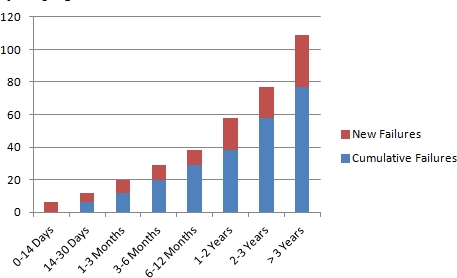Early Graft Losses in National PKE Programs: Gone, but Lost Forever?
1MedStar Georgetown Transplant Institute, Washington, DC
2UCLA, Los Angeles, CA
3Cleveland Clinic, Cleveland, OH
4NKR, Babylon, NY.
Meeting: 2018 American Transplant Congress
Abstract number: 450
Keywords: Graft failure, Kidney transplantation
Session Information
Session Name: Concurrent Session: Kidney Paired Exchange
Session Type: Concurrent Session
Date: Tuesday, June 5, 2018
Session Time: 2:30pm-4:00pm
 Presentation Time: 3:30pm-3:42pm
Presentation Time: 3:30pm-3:42pm
Location: Room 4B
Background: PKE increases transplants for patients who are highly sensitized or incompatible with intended living donors. Following catastrophes like primary non-function(PNF) or early graft loss, pairs are often left questioning their decision, now with neither a kidney nor a donor. To correct this issue, some advocate for a 'no-fault' re-allocation of end-chain living donor organs. The demand of this proposition is yet unappreciated.
Methods: Retrospective review of national PKE data including demographics, allograft anatomy, transportation logistics, and patient/graft survival was analyzed using standard statistical techniques (SAS 9.4).
Results: 2,398 transplants were done from 2007-2017, with a total of 113 graft losses (4.7%); 22 within 3 months and 38 within one year post-tx. PNF was 2/2398. Average time of transplant to graft failure was 2.16 yrs. All but 2 pairs (AB->B; B->O) were ABO compatible. Of those lost within one year, ave donor CrCl was 113.9 (vs 121.5 in surviving grafts), ave cold ischemic time (CIT) was 6.3 hours (vs 5.7), 8 had a PRA > 80 (vs 497), ave recipient age was 43.3 yrs (vs 48.5), 4 were desensitized prior to transplant (vs 261), 6 were right kidneys (vs 251), 3 had 2 arteries (vs 407) and 1 had 3 arteries 9 (vs 34). No variable was statistically significant for graft failure other than the presence of DGF.
Conclusions: Despite the known increase in CIT, national PKE enjoys excellent results. Risk of graft loss, however, may not be fully appreciated by programs/patients. There were no obvious predictors of graft loss particular to the PKE. A subset of graft losses in the first 2 weeks may be due to surgical damage during donor nephrectomy. Important plans to reconcile these faultless losses are currently underway. Programs choosing to participate in PKE must recognize the interdependency between programs, ensure meticulous technique in donor nephrectomies, communicate collaboratively, and be comfortable accepting some donor risk beyond program control.
CITATION INFORMATION: Verbesey J., Waterman A., Veale J., Flechner S., Javaid B., Ronin M., Hil G., Matthew C. Early Graft Losses in National PKE Programs: Gone, but Lost Forever? Am J Transplant. 2017;17 (suppl 3).
To cite this abstract in AMA style:
Verbesey J, Waterman A, Veale J, Flechner S, Javaid B, Ronin M, Hil G, Matthew C. Early Graft Losses in National PKE Programs: Gone, but Lost Forever? [abstract]. https://atcmeetingabstracts.com/abstract/early-graft-losses-in-national-pke-programs-gone-but-lost-forever/. Accessed December 25, 2025.« Back to 2018 American Transplant Congress
